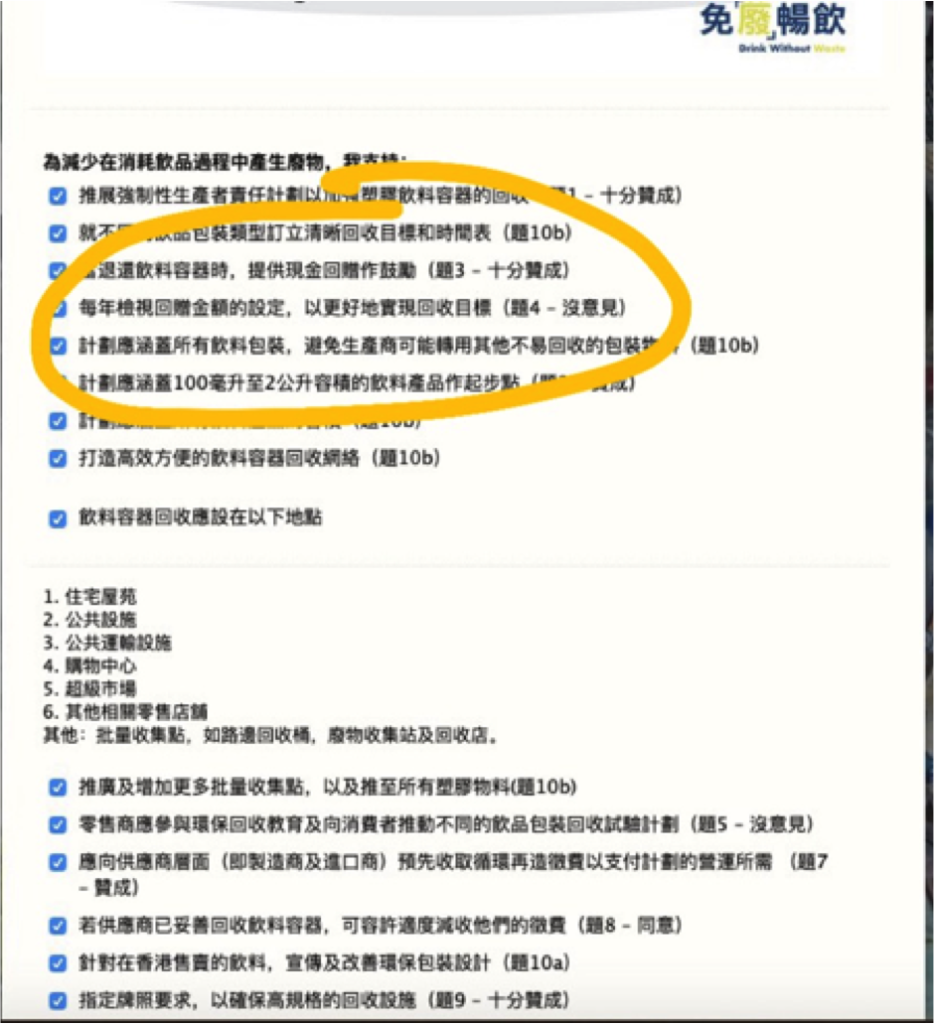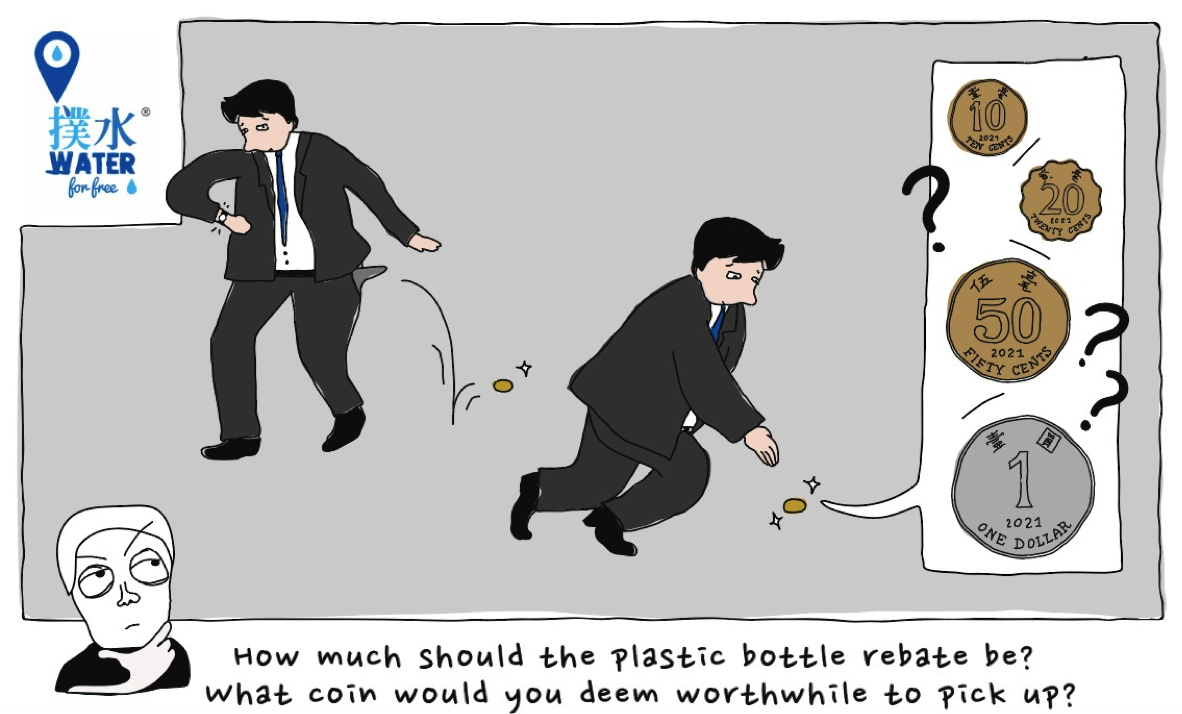The public consultation for the Producer Responsibility Scheme on plastic beverage containers ended on 21 May. It was reported that the Environmental Protection Department (EPD) received over 2000 responses. Compared to other public consultations on environmental issues, which usually collect a few hundred responses, this one did exceptionally well. Several green groups had been encouraging the public to submit responses advocating for a rebate or deposit of between fifty cents (.50) and $1.
At the beginning of the public consultation, the beverage lobby group “Drink Without Waste” had been advocating a five cent (.05) rebate. Under immense pressure and outright rebellion amongst the green groups that participated in its Working Group, it had to quietly drop this ludicrous position.

Drink Without Wastes initial plan to misrepresent a five cent rebate as a consensus shared by the green groups that are part of its Working Group failed miserably. The Green Earth, a member of it’s Working Group, issued a statement on social media to express its opposition to Drink Without Waste’s 5 cent rebate. Instead, the Green Earth advocate for a bottle deposit scheme of at least 50 cents per bottle.
Although Drink Without Waste can no longer officially advocate a 5 cent rebate scheme, it must still work to fulfil the wishes of its beverage industry funders and sponsors. It has instead switched tactics, alleging that a pilot scheme run by a member of the Working Group, and funded with taxpayer dollars, proved that a 5 cent rebate can effective incentivise huge reductions in plastic waste pollution. The lobbyist has been working overtime to stop the EPD from increasing the rebate amount (the EPD supports a 10 cent rebate). The lobbyist claimed that a higher rebate value would lead to “fraud”. Doug Woodring, founder of Ocean Recovery Alliance, a green group that is part of its Working Group, debunked the claim:
“The industry claims there could be “fraud,” if the value is too high, with material coming across the border into HK to realise this value, but we don’t think that’s possible, or a threat.
In many ways this argument is very similar to that of the tobacco industry worried of illicit imports when cigarette taxes are raised, which are proven to reduce smoking and reduce health care costs and impacts. In this case we are talking about environmental impacts, and your “trust” in if the recycling system is actually working.”
Surely if Hong Kong customs can prevent fake LV’s and Nike’s from entering the territory, it can likewise prevent empty, fake Coca Cola bottles from entering. It’s hard to fathom why a would be fraudster who could smuggle in empty plastic bottles to take advantage of a recycling scheme, wouldn’t just smuggle in filled ones!
We urge the EPD to implement the producers responsibility scheme as soon as possible. Real implementation requires rebate value to be set at a reasonable value to provide sufficient economic incentive to frontline waste collectors as well as members of the public. In 1977, the bottle deposit on a $2 bottle of Coca Cola was $1. In 2021, is it conceivable that a 5 or 10 cent rebate could substantially incentivise the public to reduce the amount of plastic waste entering our oceans and landfills?
